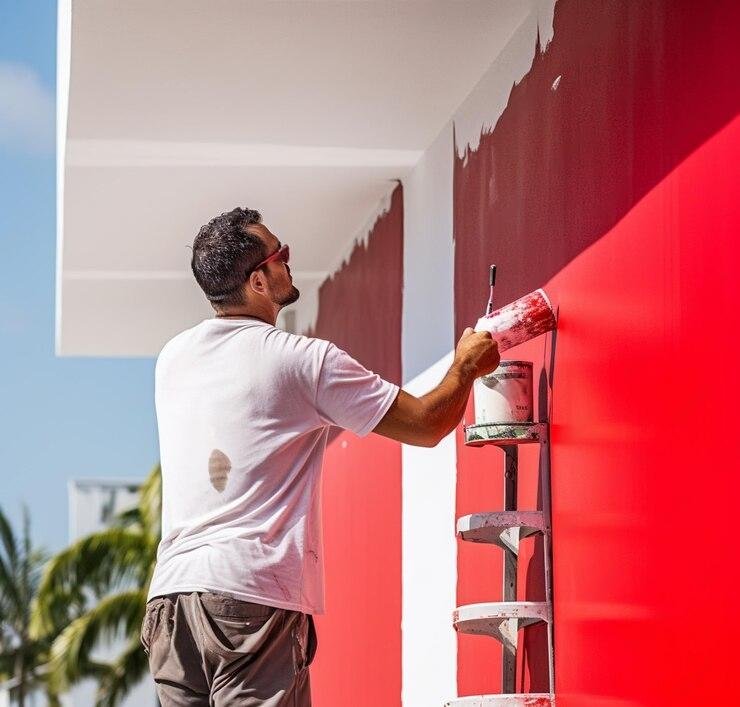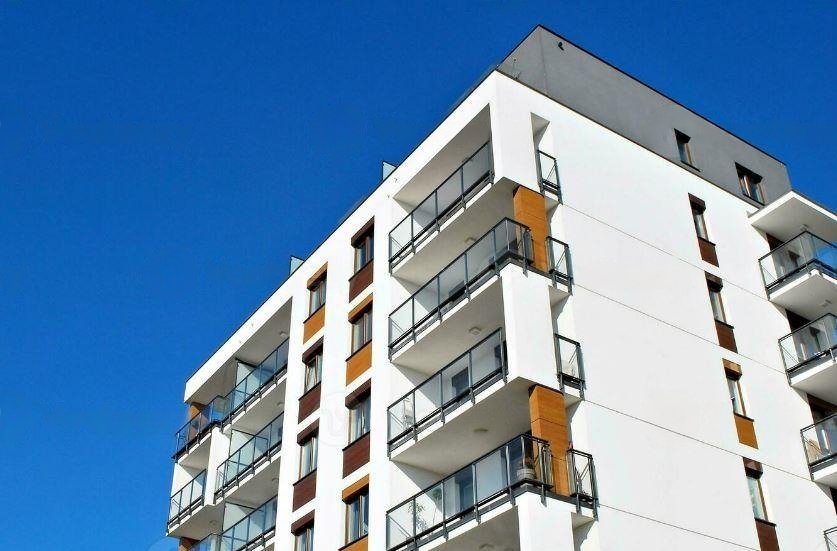Introduction to Architectural Coatings
Architectural coatings are specialized formulations applied to buildings and structures to provide both protective and aesthetic benefits. These coatings play an essential role in the construction industry, ensuring longevity, environmental resistance, and enhancing the visual appeal of various architectural elements. Ranging from exterior wall paints to specialized coatings for metal and wood, the versatility of architectural coatings makes them indispensable in modern construction.
The significance of architectural coatings lies in their multi-functional attributes. Primarily, they protect the substrates against environmental factors such as UV radiation, rain, and humidity, which can cause deterioration over time. Furthermore, they also offer additional features like resistance to chemicals, impact, and abrasion, thereby extending the lifespan of the structures.
Diverse types of architectural coatings cater to different requirements. The most common ones include primers, undercoats, and topcoats, each serving specific purposes. Primers help in surface preparation, enhancing the adhesion of subsequent layers. Undercoats provide a smooth base, ensuring uniform application of the topcoat, which is the final decorative and protective layer. Beyond these basic types, there are specialized coatings like anti-graffiti coatings, fire-retardant coatings, and elastomeric coatings, customized for specific applications.
In Assam, the usage of architectural coatings is particularly influenced by the region’s climatic conditions. Given the state’s high rainfall and humid climate, coatings with superior water resistance and moisture-barrier properties are in high demand. Traditional cultural elements also play a crucial role in influencing architectural aesthetics in Assam. For instance, detailed mithila paintings and other regional art forms often find a place in building designs, necessitating specialized coatings that can preserve and enhance these intricate artworks.
As the building industry in Assam continues to evolve, the demand for advanced and highly effective architectural coatings is expected to rise. This comprehensive guide will delve into the various aspects of these coatings, examining their application techniques, benefits, and how they meet the unique requirements of Assam’s architecture.
Geographical and Climatic Influence on Coatings in Assam
Assam, located in the northeastern part of India, is characterized by its unique geographical and climatic conditions, which play a significant role in determining the choice and application of architectural coatings. One of the most notable aspects of Assam’s climate is its high humidity levels, often exceeding 80%. This high humidity, coupled with the state’s tropical monsoon climate, leads to prolonged periods of heavy rainfall, particularly during the monsoon season from June to September. Additionally, Assam experiences considerable temperature variations, ranging from moderate winters to hot and humid summers.
The high humidity and heavy rainfall present in Assam create an environment where moisture management becomes critical for maintaining the integrity and longevity of architectural coatings. Moisture can lead to issues such as mold, mildew, and efflorescence, which not only affect the aesthetic appeal of buildings but also compromise structural integrity. Therefore, selecting coatings that offer excellent water resistance and anti-fungal properties is paramount for buildings in Assam. Paints with elastomeric properties are often preferred as they provide flexibility and help in bridging cracks, thus preventing water ingress.

Moreover, Assam’s varying temperatures necessitate the use of coatings that can withstand thermal expansion and contraction. This is particularly important for exterior surfaces exposed to direct sunlight and fluctuating temperatures. Coatings with UV resistance are also crucial to prevent degradation and fading of paint colors under intense sunlight. Reflective or cool roof coatings can be beneficial in reducing heat absorption, thereby improving energy efficiency in buildings.
In summary, the geographical and climatic conditions of Assam significantly influence the selection and application of architectural coatings. High humidity, heavy rainfall, and varying temperatures require specialized coatings that offer water resistance, anti-fungal properties, flexibility, and UV resistance. By taking these factors into account, effective and durable coatings can be achieved, ensuring the longevity and aesthetic appeal of buildings in Assam.
Common Architectural Coatings Used in Assam
Architectural coatings in Assam encompass a variety of products tailored to meet specific regional needs and environmental conditions. These include paints, primers, sealants, and protective coatings, each serving distinct purposes in the protection and aesthetics of architectural structures.
Paints are arguably the most utilized architectural coatings in Assam, with an emphasis on products that offer resistance to the region’s high humidity and seasonal monsoons. Emulsion paints, known for their water-resistance and ease of application, are particularly favored. Distemper paints, which provide a matte finish, are also popular for interiors due to their cost-effectiveness and relatively good performance in the humid climate.
Primers are essential in Assam’s architectural projects to ensure paint adhesion and surface uniformity. Alkyd primers are commonly used for their excellent sealing properties and ability to bond well with both top coat paints and substrates, making them ideal for the region’s wide range of architectural materials from wood to concrete and metal.
Sealants play a crucial role in protecting structures from moisture intrusion, an imperative need considering Assam’s heavy rains. Silicone and polyurethane sealants are frequently used to fill gaps, joints, and cracks, providing a flexible yet durable barrier against water ingress. These sealants not only extend the lifespan of buildings but also enhance energy efficiency by preventing drafts and leaks.
Protective coatings, including anti-corrosive and anti-microbial paints, are particularly important in industrial and public buildings. These coatings are formulated to prevent degradation from environmental factors, chemical exposures, and biological growths. Epoxy and polyurethane coatings are celebrated for their robustness, while modern formulations are increasingly integrating eco-friendly technologies.
Unique to the cultural landscape of Assam, the traditional Mithila paintings, though primarily on canvases and fabric, have also influenced decorative aspects of architectural coatings. The intricate, colorful patterns seen in Mithila paints have found their way onto walls and ceilings, adding a culturally rich aesthetic layer to the architectural narrative of the region.
Incorporating these coatings effectively addresses the diverse climatic challenges and aesthetic preferences, underscoring the importance of selecting appropriate materials to maintain structural integrity and visual appeal in Assam’s architectural projects.
Traditional vs. Modern Coatings: A Comparison
The architectural landscape of Assam has long been adorned with traditional coatings, primarily utilizing materials such as lime, natural oils, and plant-based resins. These traditional coatings are deeply rooted in the region’s cultural heritage and have been valued for their breathable nature and eco-friendliness. Lime-based coatings, for instance, exhibit excellent adhesion to locally available substrates while offering antimicrobial properties. Additionally, natural oils have been used to enhance the longevity of wooden structures, providing a protective barrier against moisture and pests.
However, traditional coatings come with their own set of drawbacks. Over time, these materials can deteriorate due to exposure to harsh weather conditions, necessitating frequent maintenance. In terms of color choices and surface finishes, traditional coatings are somewhat limited, which might not cater to the diverse aesthetic preferences of modern homeowners and architects.
On the other hand, modern coatings like acrylics and polyurethanes have revolutionized architectural coatings in Assam. Acrylic coatings are particularly popular due to their durability, UV resistance, and versatility in application. They offer a wide array of color options and finishes, making them suitable for a variety of design aspirations. Polyurethanes, another modern alternative, are known for their resilience against chemical and physical abrasions, providing an excellent option for high-traffic areas.
Nevertheless, modern coatings are not without their disadvantages. They often contain synthetic chemicals that may pose environmental hazards, contributing to pollution. Furthermore, the cost of modern coatings can be significantly higher compared to traditional alternatives, making them less accessible for budget-conscious projects.
In summary, both traditional and modern coatings for architectural applications in Assam have their unique benefits and limitations. While traditional materials like lime and natural oils offer sustainability and cultural appeal, modern alternatives such as acrylics and polyurethanes deliver enhanced durability, aesthetic variety, and lower maintenance needs. The choice between these options ultimately depends on the specific requirements of the project, balancing considerations of environmental impact, cost, and aesthetic preferences.
Innovative Coating Technologies in Assam
In recent years, Assam has seen remarkable advancements in the field of architectural coatings, driven by a growing emphasis on sustainability and performance enhancement. One notable innovation is the development and adoption of eco-friendly products, which are becoming increasingly popular due to their reduced environmental impact. These coatings often utilize natural ingredients and low volatile organic compounds (VOCs), ensuring safer application processes and healthier indoor environments.
Another significant technological breakthrough is the introduction of self-cleaning coatings. These products feature hydrophobic and photocatalytic properties that enable surfaces to repel water and break down organic pollutants. This not only reduces the need for frequent cleaning but also maintains the aesthetic appeal of buildings over time. Self-cleaning coatings are particularly beneficial in Assam’s humid climate, where mold and mildew can quickly become problematic.
Thermal insulative coatings represent another innovative solution gaining traction in the region. These coatings are designed to reflect solar radiation and reduce heat transfer, thereby improving the energy efficiency of buildings. By maintaining more stable indoor temperatures, thermal insulative coatings help minimize reliance on artificial heating and cooling systems, ultimately leading to lower energy consumption and costs. Additionally, these coatings contribute to a more comfortable living environment, which is especially valuable in Assam’s varied climatic conditions.
Collectively, these advancements in coating technologies are transforming the architectural landscape of Assam. They offer practical benefits such as enhanced durability, prolonged aesthetic appeal, and improved energy efficiency, while also aligning with broader sustainability goals. As the state continues to adopt these innovative products, the performance and longevity of buildings are expected to see substantial improvements, meeting the growing demands for eco-friendly and high-performing architectural solutions.
In Assam, there have been numerous successful architectural coating applications, each showcasing the unique benefits and versatility of various coatings across diverse types of buildings. One notable project is the refurbishment of the Kamakhya Temple in Guwahati, a historical site of immense cultural significance. For this project, a high-performance, weather-resistant acrylic coating was used to restore and protect the temple’s intricate surfaces, ensuring both durability and maintaining its exquisite aesthetics. This coating has significantly improved the temple’s resistance to the region’s heavy monsoons, thereby preserving its historical charm.
Another example is the transformation of a residential complex in Dibrugarh. Here, an advanced elastomeric coating was applied to the exterior walls. This type of coating is particularly beneficial in Assam due to its superior flexibility and waterproofing capabilities. The coating not only enhanced the building’s visual appeal but also provided an effective barrier against moisture ingress, preventing structural damage and mold growth. The residents reported a notable decrease in maintenance costs and improved overall appearance of the complex.
In the commercial sector, the Assam Secretariat building in Dispur underwent a significant overhaul with the application of epoxy coatings in its interior. These coatings were chosen for their remarkable durability and resistance to wear and tear, which is critical for high-traffic areas. The seamless finish of the epoxy coatings contributed to a modern, sleek look while ensuring long-term protection against scuffs, stains, and impact damages.
A particularly interesting case is the use of Mithila paints in a boutique hotel in Jorhat. Known for their rich colors and intricate designs, Mithila paints added a touch of ethnic elegance to the hotel’s decor. Beyond aesthetics, these paints also offer excellent adhesion and UV resistance, which are crucial for maintaining vibrant colors over time in Assam’s often harsh climate.
Each of these case studies exemplifies how strategic use of specialized architectural coatings can remarkably enhance both the durability and aesthetic appeal of buildings across Assam. Whether for historical preservation, residential comfort, or commercial durability, the right choice of coating can make all the difference.
Challenges and Solutions in Coating Application in Assam
Applying architectural coatings in Assam presents a range of unique challenges that require specialized solutions and best practices. One of the most significant challenges is the weather conditions in the region. Assam experiences heavy rainfall during the monsoon season, which can interfere with the drying and curing times of coatings. To mitigate this problem, it is advisable to schedule painting projects during the drier months and use fast-drying paints specifically designed for high-humidity environments.
Another prevalent issue is substrate preparation. The humid climate and frequent rain can lead to issues such as damp surfaces and mold growth, which can hinder proper adhesion of the coatings. To address this, thorough surface preparation is crucial. This includes cleaning surfaces to remove any dirt, contaminants, and mold and ensuring that the substrate is completely dry before applying any coatings. Using sealants and primers designed to combat moisture can also enhance the adhesion and longevity of the coatings.
The availability of skilled labor is another challenge in Assam. While there is a growing pool of local talent, finding workers with expertise in the latest coating technologies can be difficult. Investing in training programs for local workers can be an effective solution. Providing comprehensive training on modern techniques, proper application methods, and safety protocols can help bridge this skill gap. Additionally, collaborating with companies that offer specialized training or employ skilled professionals in the field of architectural coatings can ensure high-quality application.
Ultimately, addressing these challenges requires a strategic approach tailored to the specific conditions of Assam. By carefully considering weather patterns, investing in proper substrate preparation, and enhancing the skill set of the workforce, it is possible to achieve durable and aesthetically pleasing architectural finishes that can withstand the region’s unique environmental conditions.
Future Trends and Opportunities in Assam’s Coating Industry
The architectural coatings industry in Assam is evolving, driven by advancements in technology, changing consumer preferences, and policy initiatives. Market trends indicate a rising demand for eco-friendly and durable coatings, spurred by increasing awareness of environmental issues. This shift towards sustainability presents a significant opportunity for both local and international businesses to introduce innovative products that meet these new consumer needs.
Emerging products like anti-microbial and self-cleaning paints are gaining traction in Assam, aligning with global trends in the coatings industry. These high-performance coatings not only enhance the aesthetic appeal of buildings but also contribute to health and hygiene, a consideration that has become increasingly pertinent post-pandemic. Companies focusing on research and development in these areas are likely to capture substantial market share.
The local market is also witnessing a growing interest in traditional art forms translated into modern applications, such as Mithila paints. This trend offers a unique niche for businesses to leverage cultural heritage in innovative architectural coatings. Incorporating traditional designs and methods into contemporary products can attract both local consumers and international clients looking for distinctive, culturally rich aesthetics.
Government policies play a crucial role in shaping the future of the coatings industry in Assam. Incentives for sustainable practices, coupled with stringent regulations on environmental impact, compel manufacturers to adopt greener alternatives. Furthermore, infrastructure development projects initiated by the government create additional demand for architectural coatings, providing ample opportunities for growth and expansion.
In essence, the future of Assam’s architectural coatings industry is promising, with ample opportunities for innovation and growth. Businesses that align with the evolving trends towards sustainability, health, and cultural integration stand to benefit immensely. By staying attuned to market demands and leveraging government support, both local and international players can secure a strong foothold in this dynamic industry.

